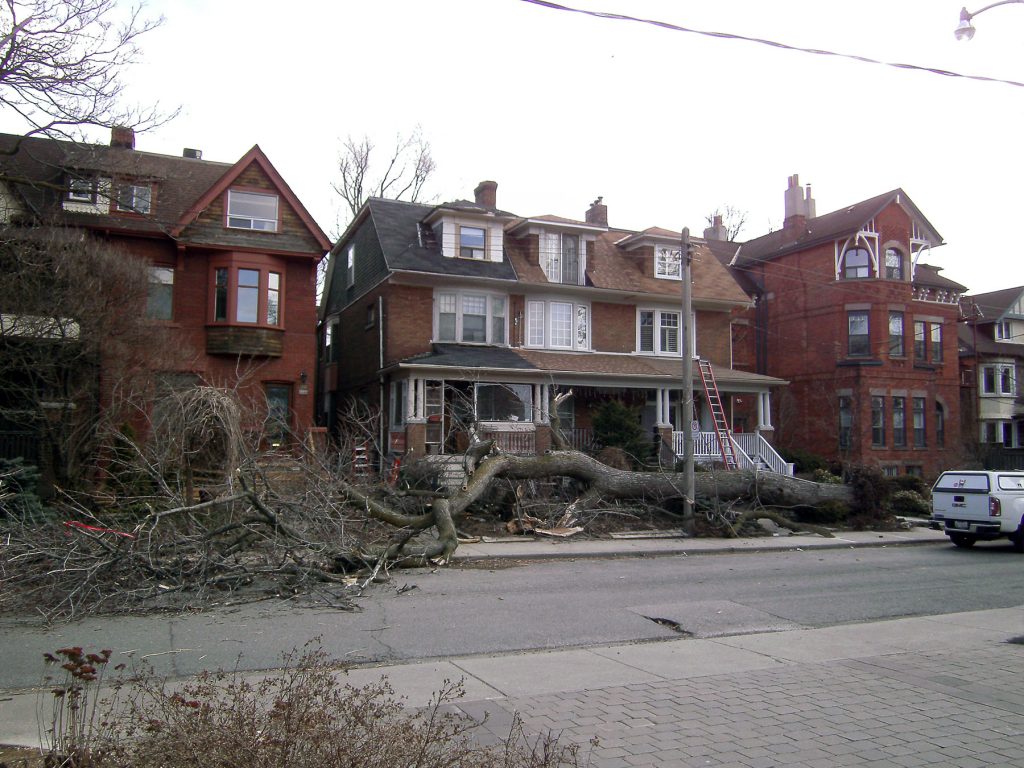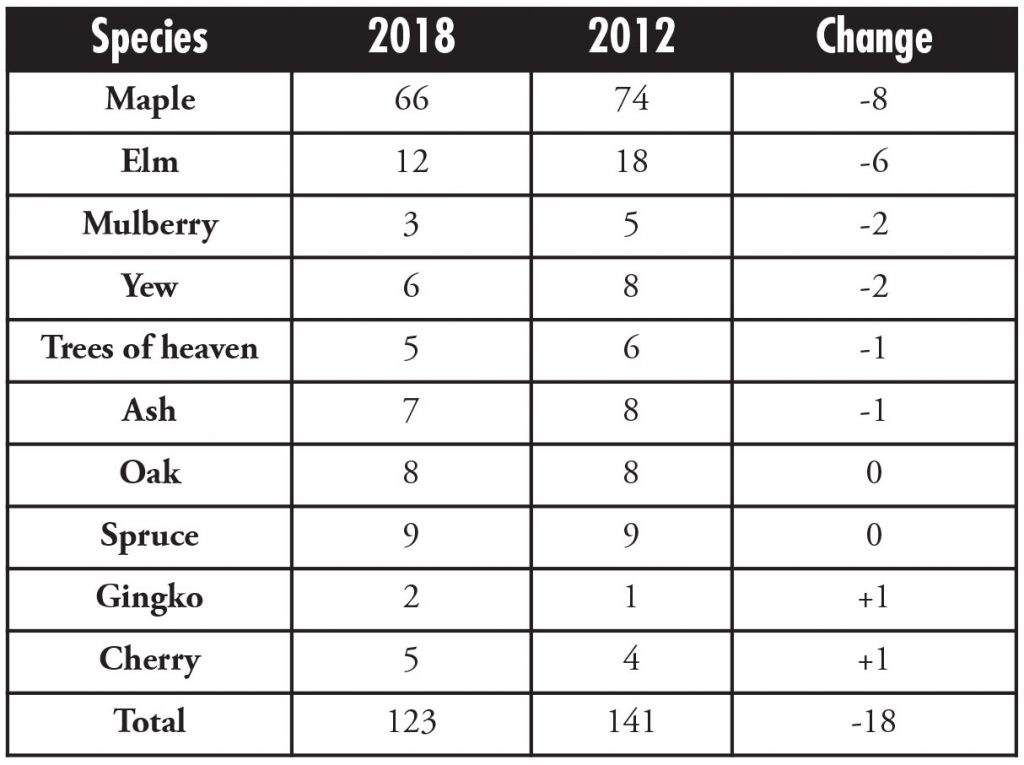Arthur Gron tracks tree attrition rate

COURTESY ARTHUR GRON
By Arthur Gron
In the Annex and Harbord Village, large maples and majestic Dutch elms are maturing and dying out. The trees that are taking their place tend to be smaller ornamental trees, throwing the future of the area’s beloved canopy into question.
On December 3, TreesPlease held a “Tree Talk” event at 918 Bathurst. I presented an analysis I had completed of the trees on Howland Ave. The Harbord Village Residents’ Association (HVRA) presented their extensive survey of the approximately 5,000 trees from that neighbourhood.
Between 2009 and 2012, TreesPlease collected data on almost all of the trees in the Annex, both backyard and frontyard trees. The information can be found at the Annex Residents’ Association website. On the same website, one can view all the reports detailing the Annex’s tree varieties.

Almost 10 years later, and before the December event, I resurveyed the front yard trees on Howland Avenue. Using the 2009 data, I looked to see what had changed and found the results startling: the street had lost almost 10% of its trees.
In 2012, there were 74 large maple trees along Howland, but by late 2018 only 66 remained. Elms had decreased from 18 to 12. Even more worrying, the replanting rate was only 1 percent, and the trees that were replanted are of small ornamental varieties – no substitute for broad maples or majestic elms. Out of the 141 trees that Howland Avenue had lining the street, 123 were left in 2018. That’s almost a 10% loss, in less then 6 years.
Though this is a sampling of the trees, it suggests that if the trend is accurate 10% of the 10,000 trees surveyed in 2009 have vanished. That would be 1,000 trees, the majority of which would be maples and elms.
Data collected from the Harbord Village Residents’ Association shows an even worse decline than that which I found on Howland Ave. The HVRA carried out an inventory of trees in 2007-8 that counted 6,386 trees. In 2017-18 in a followup inventory, they counted only 4,552 trees demonstrating a remarkable loss of 30% of trees in a decade. Again, the loss is amongst the large mature trees, such as the maple. And, just like on Howland Ave., the trees that are being planted in Harbord Village are of a small ornamental variety, which will not enclose the street in a canopy and generally have a shorter life-span.
What explains the loss of the maple and the elm? To begin with, the urban tree has a shorter life than its rural counterpart. City maples, such as the pervasive and invasive Norway maple, can be expected to live 100 to 120 years in the city. Compare that to 250 years in a natural settling. Several factors speed a city tree’s demise: road salt, not enough space for roots, pavement preventing water from reaching the roots, air pollution, compacted soil, and damaged bark from accidents or construction.
The planting of large maples and oaks in the 1800s, when the Annex was being built, was part of the culture of that time. Sailing ships required large amounts of good wood and the British navy in particular sought sources of premium wood for its masts despite the shift at this time towards iron masts.
Iron furniture, having been mass-produced since the 1850s, took on a taint of cheap plastic: prized furniture was made of woods such as walnut, mahogany, and rosewood. Yet another reason to plant a hardy, large tree in the front yard. These trees were symbols of elegance and status.
The front yard itself was a showcase for a house, as landscape architecture was coming into vogue. Central Park in New York was established in 1857 and Toronto’s High Park in 1876. Parks were no longer game reserves for the rich, but were manicured to look like paintings of pristine, scenic forests. Green space provided an attractive contrast to the rapidly industrializing landscape of the time.
Lastly a home was seen as something that would be passed down from one generation to the next, so planting a maple that would take 30 or 40 years to grow into a large tree was an investment in the future and the family.
Recent storms including the ice storm of December 2013, the wind storm of October 2017, the ice storm of April 2018, and the wind storm of May 2018 have all taken their toll on the behemoth-sized trees of Howland Ave. Undoubtedly, with climate change, we can expect more severe weather and less hospitable conditions for these aged trees.
The Annex and Harbord are changing, and I cannot say how long the tree canopy will last. The smaller trees will look pretty, but they will never provide us with the majestic canopy we now enjoy.
For a printed walking tour of Howland Ave., visit my website gron.ca. and for a tree map visit the ARA’s website at theara.org/Interactive-Tree-Map.
Arthur Gron is a member of Trees Please, a committee of the Annex Residents’ Association. Gron has participated in long term surveys that chronicle a demise of the Annx’s treasured tree canopy.

1 response so far ↓
1 Michael // Apr 29, 2019 at 9:04 am
A really good ( although sobering ) assessment of just one street, but as one who was involved in the multiyear tree survey none in the Annex, Howland’s situation is mirrored across the whole community.
We all need to watch out for the trees on our street and call 311 if a tree needs care, or a space opens up where the city can plant a new one. Many Thanks Arthur